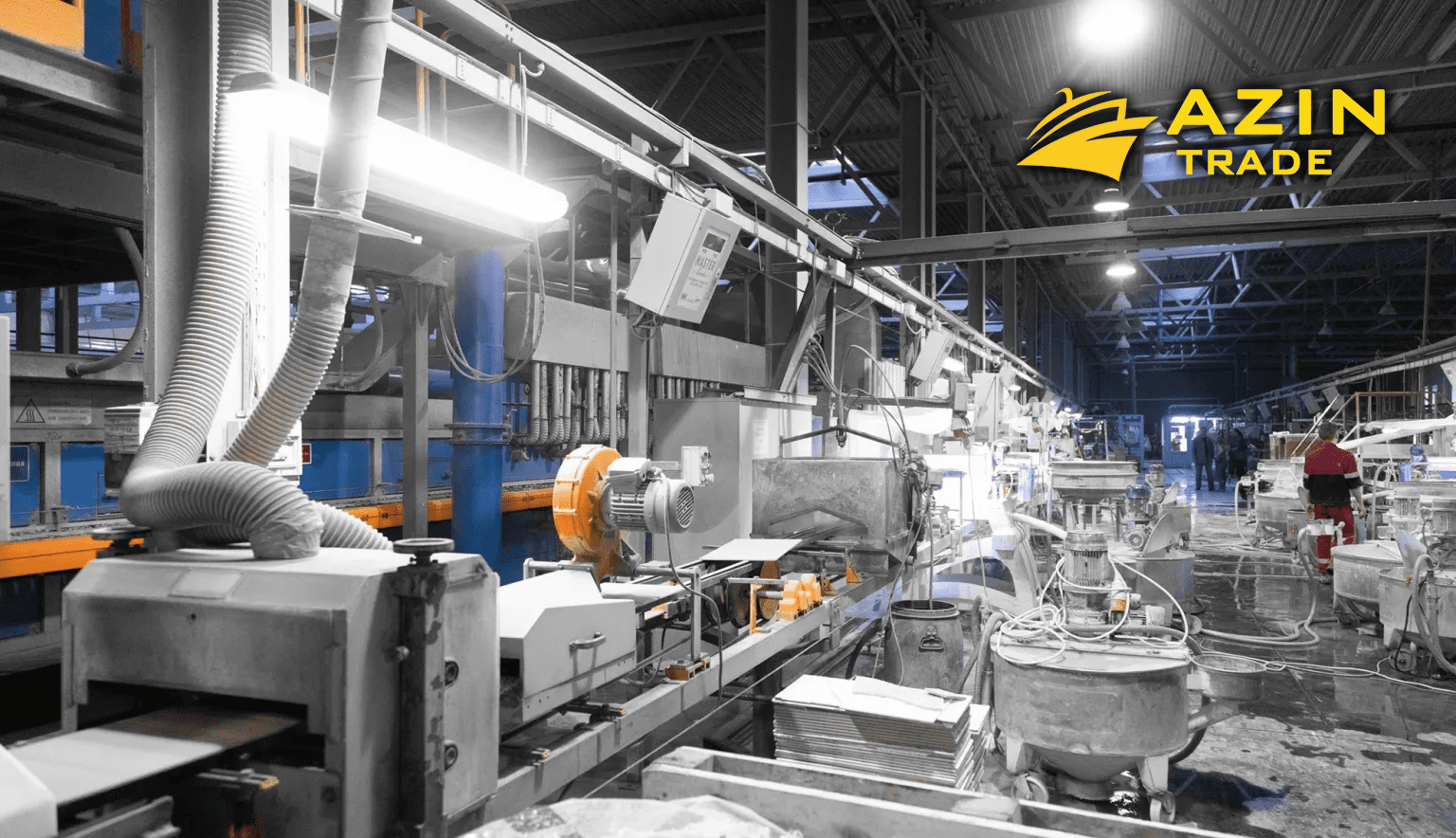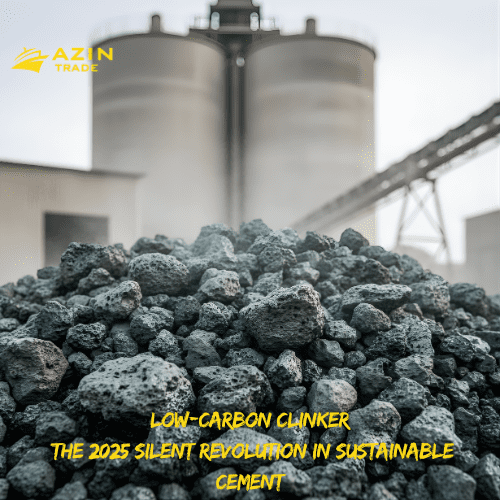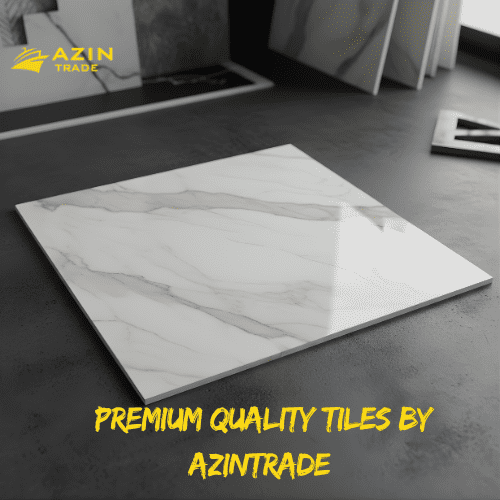Oman Cement Expands Its Operations: A New Plant and Capacity Upgrades to Strengthen Its Position in the Industry
Oman Cement, a major player in the Gulf region’s cement industry, is gearing up for significant expansion as it plans to establish a new plant in Duqm and upgrade its existing operations. These strategic moves aim to solidify its position as a top producer in the region, addressing both growing local demand and regional export opportunities. This article explores Oman Cement's expansion strategy, its impact on the industry, and the broader implications for the Middle East construction landscape.
A New Cement Plant in Duqm: Meeting Market Demand
Oman Cement has been evaluating the construction of a new cement plant in Duqm, a strategic coastal city in Oman known for its rapidly developing industrial sector. With an expected production capacity of 5000 tons of clinker per day (tpd), this new facility is poised to meet the rising domestic and regional demand for cement. Duqm’s location provides a logistical advantage, enabling easier access to both local and international markets. It also aligns with the government's long-term vision of transforming Duqm into a key industrial hub that can diversify the nation’s economy away from oil dependency.
However, the decision to move forward with the new plant is still under consideration, as Oman Cement weighs the financial and operational implications. Factors such as market demand, competitive dynamics, and energy costs play a significant role in this decision-making process. Once approved, this plant will mark a significant milestone in Oman Cement’s growth journey, boosting its clinker production capacity and helping the company meet increasing demand from both domestic construction projects and international markets.
Muscat Plant Enhancements: Maximizing Output and Efficiency
While the Duqm project remains under review, Oman Cement has not delayed other critical upgrades to its existing operations. One of the most significant initiatives currently underway is the enhancement of the company’s Muscat plant. This involves debottlenecking the Line 3 cooler, which will increase its clinker production capacity from 4000 to 6500tpd.
The modernization of the Muscat facility is aimed not only at boosting output but also at improving clinker quality, which is vital for producing superior-grade cement. Enhancing clinker quality ensures that Oman Cement can produce a wider range of cement products, catering to diverse customer needs in the construction and infrastructure sectors. Additionally, these upgrades are expected to optimize energy consumption, reducing the overall cost of production and making Oman Cement more competitive on the global stage.
By increasing efficiency at its Muscat plant, Oman Cement is also positioning itself to meet the growing demand for building materials driven by Oman’s infrastructure development and construction projects. The country has been investing heavily in new roads, ports, and industrial zones, all of which require a steady supply of high-quality cement. As Oman continues its ambitious development plans, Oman Cement’s expanded capacity will help ensure that local demand is met while also creating opportunities for increased exports.

Powering Growth: Connecting to the 132kV Grid
In addition to boosting its clinker production capacity, Oman Cement is also focusing on ensuring a reliable and efficient energy supply to support its expanding operations. The company has decided to connect its operations to the national 132kV power grid, a move that is expected to provide a more stable and cost-effective energy source for its plants.
To facilitate this transition, Oman Cement has appointed a technical consultant and floated an EPC (Engineering, Procurement, and Construction) tender. The connection to the 132kV grid will reduce the company's reliance on internal power generation systems, potentially lowering energy costs and reducing environmental impact. As energy is one of the most significant operational expenses in the cement manufacturing process, this move could yield substantial long-term cost savings for Oman Cement, further enhancing its competitive position.
The shift to a more efficient power supply is part of a broader trend in the global cement industry, where companies are increasingly focusing on reducing their energy consumption and carbon footprints. Oman Cement’s decision to connect to the national grid aligns with this global movement, reflecting the company’s commitment to sustainability and operational efficiency.
The Strategic Importance of Oman’s Cement Industry
Oman’s cement industry plays a critical role in the country’s economic development, particularly as the government continues to invest in infrastructure and industrialization. The construction of roads, bridges, airports, and industrial zones requires vast quantities of cement, making local producers like Oman Cement essential to the country’s growth.
In recent years, Oman has also emerged as a key exporter of cement and clinker, particularly to neighboring countries in the Gulf Cooperation Council (GCC) region and East Africa. Oman Cement’s strategic location, combined with its planned expansions, will allow it to further strengthen its position as a regional cement supplier. With global demand for building materials expected to rise, particularly in emerging markets, Oman Cement is well-positioned to capitalize on these growth opportunities.
Moreover, Oman Cement’s expansion plans come at a time when the global cement industry is undergoing significant changes. Rising urbanization, particularly in Asia and Africa, is driving demand for construction materials. However, the industry also faces challenges, including fluctuating raw material prices, stringent environmental regulations, and increased competition from global players. By investing in new production capacity and operational efficiency, Oman Cement is taking proactive steps to address these challenges and secure its future growth.
Challenges and Opportunities Ahead
While Oman Cement’s expansion efforts hold tremendous potential, they are not without challenges. The global cement industry is highly competitive, with major producers across the world vying for market share. Moreover, the cement industry is heavily impacted by fluctuations in energy costs, raw material availability, and regulatory changes. Oman Cement must navigate these complexities to ensure that its expansion plans remain viable and profitable.
Additionally, as environmental concerns become more pronounced, cement producers are under increasing pressure to adopt sustainable practices. The cement manufacturing process is energy-intensive and generates significant carbon emissions. As part of its future strategy, Oman Cement may need to explore ways to reduce its environmental impact, whether through the adoption of renewable energy sources, carbon capture technologies, or more sustainable production processes.
Despite these challenges, Oman Cement’s future looks promising. The planned expansion into Duqm, combined with the upgrades at the Muscat plant and the transition to the 132kV grid, positions the company to take full advantage of growing demand in both domestic and export markets. The company’s strategic approach to increasing production capacity while enhancing operational efficiency and sustainability reflects its commitment to long-term growth and industry leadership.
Conclusion: Oman Cement’s Roadmap to Growth
Oman Cement’s decision to expand its operations is a reflection of the company’s ambition to remain a dominant force in the region’s construction materials industry. By investing in new production capacity in Duqm and upgrading its existing facilities in Muscat, the company is well-prepared to meet the rising demand for cement driven by Oman’s infrastructure projects and regional development.
The planned connection to the 132kV grid will further enhance the company’s operational efficiency, providing a more reliable and cost-effective power supply. These strategic initiatives, coupled with a focus on improving clinker quality and production capacity, ensure that Oman Cement is on a strong growth trajectory.
As the global demand for construction materials continues to rise, Oman Cement’s proactive expansion strategy positions it to capitalize on new opportunities and maintain its competitive edge in the evolving cement industry.
توسيع صادرات الكلنكر الإيراني إلى الأسواق الإقليمية: لاعب رئيسي في قطاع البناء العالمي
شهدت صناعة الأسمنت والكلنكر الإيرانية نمواً ملحوظاً خلال العقد الماضي، ومن المتوقع أن يستمر هذا الزخم في المستقبل. وعلى وجه الخصوص، أصبح الكلنكر، المادة الخام الأساسية في إنتاج الأسمنت، سلعة تصديرية هامة لإيران، خاصة إلى الأسواق الإقليمية المجاورة مثل الشرق الأوسط وآسيا الوسطى وحتى إفريقيا. يستكشف هذا المقال العوامل التي تدفع إلى توسع صادرات الكلنكر الإيراني، دور المنتجين الإيرانيين، وتأثير هذا النمو على قطاع البناء العالمي.
أهمية الكلنكر في البناء
الكلنكر هو المنتج الوسيط الحاسم في عملية تصنيع الأسمنت. يتم إنتاجه عن طريق تسخين الحجر الجيري والطين ومواد أخرى في أفران بدرجات حرارة عالية. بمجرد أن يبرد، يتم طحن الكلنكر مع الجبس لإنتاج الأسمنت. وهذا يجعل الكلنكر مادة أساسية في البناء العالمي، حيث أن الأسمنت هو المادة اللاصقة المستخدمة في الخرسانة، العمود الفقري للبنية التحتية والمباني والطرق. بدون توريد منتظم للكلنكر، ستتعرقل عملية إنتاج الأسمنت، مما يؤثر بشكل كبير على صناعة البناء.
الموارد الطبيعية الوفيرة في إيران، مثل الحجر الجيري، جنباً إلى جنب مع موقعها الجغرافي الاستراتيجي، يجعلها لاعباً محورياً في إنتاج الكلنكر وتصديره. وقد زادت القدرة الإنتاجية للكلنكر في إيران بشكل مطرد، مما أتاح للبلاد تلبية احتياجاتها المحلية وتصدير كميات كبيرة إلى الأسواق الإقليمية.
العوامل الرئيسية التي تدفع نمو صادرات الكلنكر الإيراني
هناك عدة عوامل ساهمت في التوسع السريع لصادرات الكلنكر الإيراني في السنوات الأخيرة:
- زيادة الطلب على البناء في المنطقة
تشهد دول الشرق الأوسط وآسيا الوسطى طفرة في قطاع البناء، مدفوعة بالتحضر، النمو السكاني، واستثمارات الحكومات في مشاريع البنية التحتية. دول مثل العراق، الكويت، أفغانستان، باكستان وحتى الهند تسعى باستمرار للحصول على إمدادات جديدة من الكلنكر لتغذية صناعات الأسمنت المتنامية فيها. وبفضل قربها من هذه الأسواق، أصبحت إيران مورداً مفضلاً. - التسعير التنافسي والقرب الجغرافي
بسبب تكاليف الإنتاج المنخفضة والمزايا الجغرافية، تستطيع إيران تقديم أسعار تنافسية مقارنة بمنتجي الكلنكر الآخرين. القرب من أسواق رئيسية مثل العراق وسوريا وباكستان يضمن انخفاض تكاليف النقل، مما يجعل الكلنكر الإيراني أكثر جاذبية للمستوردين. هذا مفيد بشكل خاص للدول التي قد تواجه تحديات لوجستية عند الاستيراد من مناطق أبعد. - زيادة القدرة الإنتاجية
شهدت القدرة الإنتاجية للكلنكر في إيران قفزة كبيرة في السنوات الأخيرة، بدعم من الاستثمارات في التقنيات الحديثة وتوسيع المنشآت القائمة. وتتجاوز القدرة الإنتاجية الحالية للكلنكر 90 مليون طن سنوياً، حيث يتم تخصيص جزء كبير منها للتصدير. هذا الفائض في الإنتاج جعل إيران من بين أكبر المصدرين في تجارة الكلنكر العالمية. - انخفاض قيمة الريال الإيراني
إن انخفاض قيمة الريال الإيراني في السنوات الأخيرة جعل صادرات البلاد أكثر جاذبية للمشترين الدوليين. سعر الصرف المنخفض يعني أن المستوردين الأجانب يمكنهم شراء الكلنكر الإيراني بأسعار تنافسية، مما يعزز الطلب في الأسواق الإقليمية.
الأسواق الإقليمية التي تدفع صادرات الكلنكر الإيراني
لقد وجدت صادرات الكلنكر الإيراني أسواقاً قوية في العديد من الوجهات الرئيسية، مما ساهم في هيمنة البلاد على المنطقة.
- العراق
يعد العراق من أكبر وجهات تصدير الكلنكر الإيراني. لقد خلقت جهود إعادة الإعمار في العراق بعد سنوات من النزاع طلباً هائلاً على مواد البناء، بما في ذلك الأسمنت والكلنكر. القرب الجغرافي لإيران وقدرتها على توفير إمدادات مستمرة جعل منها لاعباً حاسماً في صناعة الأسمنت العراقية. - الكويت
يعد السوق الكويتي أيضاً من الأسواق الهامة للكلنكر الإيراني. في السنوات الأخيرة، كانت الكويت من أكبر المستوردين، حيث شكلت جزءاً كبيراً من صادرات الكلنكر الإيراني. احتياجات البنية التحتية المتزايدة في البلاد، جنباً إلى جنب مع تسعير إيران التنافسي، رسخا هذه العلاقة التجارية. - أفغانستان وباكستان
تعد أفغانستان وباكستان من الأسواق الرئيسية للكلنكر الإيراني أيضاً. تعتمد أفغانستان بشكل كبير على الكلنكر المستورد لتلبية احتياجاتها من البناء. على الرغم من التوترات الجيوسياسية، تظل باكستان من المشترين الرئيسيين للكلنكر الإيراني بفضل مشاريع التنمية الحضرية والصناعية المتزايدة. - الهند
تظهر الهند كسوق واعد للكلنكر الإيراني. باعتبارها واحدة من أسرع الاقتصادات نمواً في العالم، فإن الطلب على الأسمنت في الهند يتزايد بسرعة. الكلنكر الإيراني مهيأ لتلبية هذا الطلب، مع توقعات بزيادة أحجام التصدير في السنوات القادمة.
التحديات والفرص في صناعة الكلنكر الإيراني
في حين أن صناعة الكلنكر الإيرانية مزدهرة، إلا أنها ليست خالية من التحديات. العقوبات الاقتصادية، وخاصة تلك المفروضة من الدول الغربية، جعلت من الصعب على إيران الانخراط في التجارة العالمية بحرية كما ترغب. أدت العقوبات إلى مشكلات في الوصول إلى الأنظمة المالية الدولية، مما جعل المعاملات أكثر تعقيداً لكل من المصدرين الإيرانيين والمشترين الأجانب. ومع ذلك، وجدت إيران طرقاً للتخفيف من هذه التحديات من خلال التركيز على التجارة مع الدول المجاورة وتلك التي لا تتأثر بالعقوبات الدولية.
علاوة على ذلك، يمكن أن تشكل تقلبات أسعار الوقود والطاقة، جنباً إلى جنب مع عدم الاستقرار الاقتصادي المحلي، مخاطر على إنتاج ونقل الكلنكر. الطاقة هي عامل تكلفة رئيسي في إنتاج الكلنكر، وأي اضطرابات في إمدادات الوقود أو زيادات في الأسعار قد تؤثر على الربحية.
دور الشركات الإيرانية في سوق الكلنكر العالمي
برز عدد من الشركات الإيرانية كقادة في إنتاج الكلنكر وتصديره، مما ساعد على تعزيز مكانة إيران في السوق العالمية. تعتبر شركة أزين تريد من الأسماء البارزة في هذا المجال. كشركة منتجة ومصدرة رئيسية للكلنكر، كانت أزين تريد أداة هامة في تلبية الطلب المتزايد من الأسواق الإقليمية. من خلال الحفاظ على معايير إنتاج عالية واستغلال ميزتها الجغرافية، بنت أزين تريد سمعة على مستوى الجودة والموثوقية، مما يعزز الإمكانات التصديرية لإيران.
بالإضافة إلى أزين تريد، ركزت شركات إيرانية رئيسية أخرى في صناعة الكلنكر على زيادة القدرة الإنتاجية، الاستثمار في التقنيات المتقدمة، وتأمين عقود طويلة الأجل مع المشترين الدوليين.




